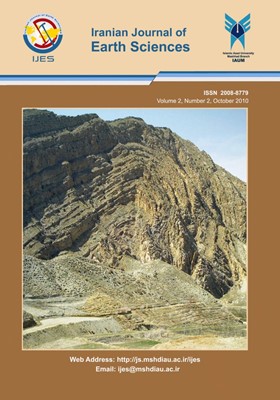Petrochemical Characteristics of Neogene and Quaternary Alkali Olivine Basalts from the Western Margin of the Lut Block, Eastern Iran
Subject Areas : MineralogyS. Saadat 1 , M. H. Karimpour 2 , Ch. Stern 3
1 - Department of Geological Sciences, University of Colorado, Boulder, CO, USA, and Islamic Azad University, Mashhad Branch,
Iran
2 - Research Center for ore deposit of Eastern Iran, Ferdowsi University of Mashhad, Iran
3 - Department of Geological Sciences, University of Colorado, Boulder, CO, 80309-0399 USA
Keywords:
Abstract :
The Nayband strike-slip fault forms the western margin of the micro-continental Lut block in Eastern Iran. Neogene and Quaternary mafic volcanic rocks collected near Tabas, along the northern part of the fault (NNF; 15 Ma), and further to the south, along the middle part of the fault (MNF; 2 Ma), are within-plate sodic-series alkali olivine basalts with high TiO2 and up to >16% normative nepheline. Their high MgO, Ni and Cr contents indicate that they crystallized from relatively primitive magmas. Their low La/Nb and Ba/Nb ratios are similar to oceanic island basalts (OIB) and unlike convergent plate boundary arc basalts (IAB). These alkali olivine basalts show enrichment in LREE relative to HREE and limited variation in Sr, Nd and Pb isotopic values which all plot in the range of OIB. Ce/Pb (>39), Nb/U (44-120) and P2O5/K2O (~0.4) ratios suggest that crustal contamination was not significant for MNF basalts. The data may be interpreted as indicating the participation of upwelling mantle asthenosphere and the deeper continental mantle lithosphere in the generation of these basalts. They formed by generally low, but variable degrees of partial mantle melting, which decreased with time from 15 Ma NNF relative to2 Ma MNF basalts. The small volume of melts that formed the MNF basalts rose to the surface along the deep Nayband strike-slip fault with no interaction with the continental crust. The larger volume of NNF basalts interacted to some degree with the crust and are associated with basaltic andesites and andesites.


